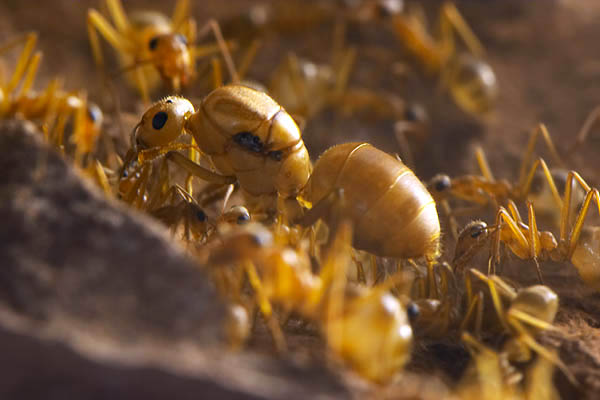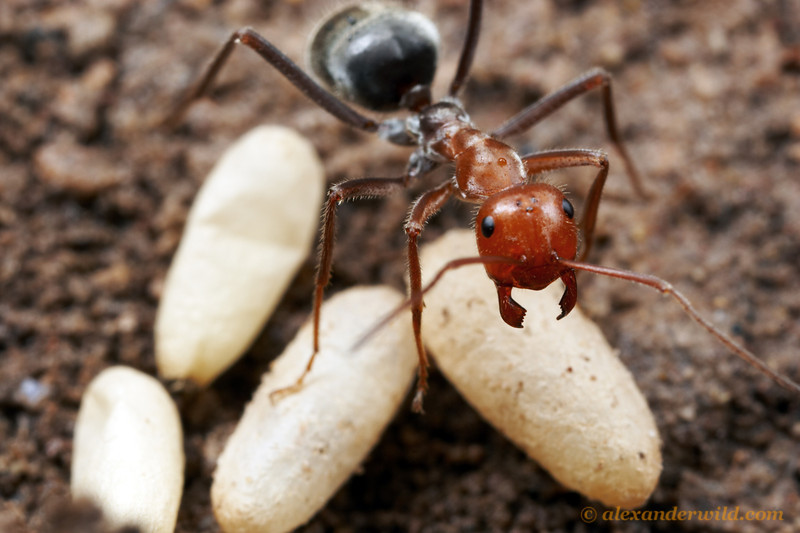Reproduction
Myrmecocystus mexicanus wingless queen and workers. Photo by Alex Wild.
Most colonies of the ant Myrmecocystus mexicanus contain queens,
males, and workers. The bodies of the males and females are medium to dark
brown in color, with their appendages being slightly lighter in color.
Although they have similar coloring, the females are larger than the males
(Snelling, 1982). To reproduce the winged-queens and males will emerge from
their nests to participate in what is called a nuptial flight. The males and
females remain outside the colony for several days before and after the
nuptial flight in a process that is called swarming (Conway, 1980). Swarming
typically takes place in late July at dusk and is associated with
precipitation. It has been found that when rain occurs or there is a
significant amount of moisture in the air, it is much more likely that a
nuptial flight will take place. The moisture in the air most likely protects
the ants from dehydration in their harsh environments (Conway, 1980). During
the nuptial flight the males and queens will mate while in flight, and
because this is a very difficult process not all queens will return to their
nests impregnated. After they return to their nest and reproduce the queens
will lose their wings. Each of the nests will contain only one wingless
queen, and many virgin winged queens. The average life span of a queen is
250 days, but it may be more or less than that depending on the nutrition
and health of the queen (Conway, 1990).
Worker ant with pupae. Photo by Alex Wild.
Queens will usually produce their eggs 7 to 10 days after the nuptial flight
(Conway, 1983). After the eggs are laid, the virgin-queens and workers will help tend to
them. This usually consists of carrying, standing over, or holding the eggs.
The virgin-queens and workers prefer that the eggs be near a moist environment and are quite
protective of them, there have even been accounts of the queens picking the
eggs up when nests were opened or disrupted. The larvae appear 17 to 23 days
after the eggs are laid, and remain in the larval stage for another 171 to
290 days (Conway, 1983). The pupae appear between May and June, and this
stage is generally only 23 days long. Both the males and females enter the
adult stage about a month prior to swarming (Conway, 1980).

